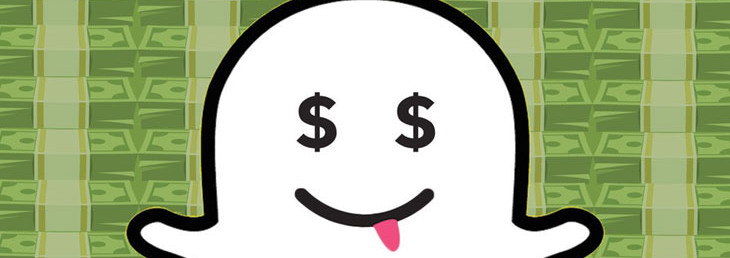Snapchat implemented Snapcash thanks to a square deal

If any messaging app could become a serious competitor to ubiquitous Whatsapp, this is Snapchat. Especially popular among teenagers, the number of its users has been growing exponentially thanks to its characteristic feature: Snapchat allows to control how long a friend can view your message by simply setting the timer up to ten seconds before send it. They’ll have that long to view the message and then it disappears forever.
But competition in the apps world is hard, as it is to find a proper business model or the kind of features that will appeal to most of potential new users. Snapchat decided not to try alone and partnered with payment service Square to add a new payments feature that allows users to send and receive money from friends through the app’s private messaging service.
The new function, called Snapcash, works quite simply. Users type out the dollar amount they’d like to send as part of any private message (for example, “I send you 10$ for your brother’s gift”). The app recognizes the user is trying to send money and a green payments button illuminates next to the keyboard to activate and confirm a payment completed once the message has been sent.
Snapcash is built on top of Square’s own money-sending service called Square Cash, launched a year earlier. Snapchat could have tried to develop its own payment service or use one developed by a third party and brand it as own. But there were reasons why both companies preferred to partner for a square collaboration.
- Snapchat suffered some security issues in the past. The app was hacked and some millions accounts names and phone numbers were “stolen”. Months later, thousands of private Snapchat photos were leaked online. As Snapchat’s partner, Square is responsible for storing all user bank and debit card information. This may calm down some users concerned with Snapchat’s security.
- Square has been branded to professional and commerce users but not so much as a payment tool for general and younger public. Probably Snapchat is paying Square a small fee for each transaction it processes, but Square could be even more interested in awareness than fees. Square’s logo appears within the popular app when a user is introduced to Snapcash for the first time, but the automatic creation of new Square Cash accounts may be the greatest benefit for the payments startup, which (in theory) collects payment data from all new users generated from Snapchat.
- On the other hand, the deal allows Snapchat to explore new revenue streams, seeking different ways to expand on its traditional ephemeral photo-sharing service. Depending on the experience output, Snapchat could decide offering some other payment methods such as credit cards or bank accounts.
- The partnership also allows Square “to explore”. The Snapcash deal could be big for Square Cash’s competitive strategy as it tries to compete with Venmo, Google Wallet, and some other competitors at the crowded p2p payments market. Wedging itself into p2p payments through a consumer app that tens of millions of people already regularly use with their close friends, Square could inject itself into the lives of people who never considered downloading a finance app.
There is another reason why this co-innovation took place. It’s about a personal interrelation and trust between decision takers, a paramount element key in Co-Society value proposal and one that is not the first time we point out.
The idea for Snapcash came in fact when Square CEO Jack Dorsey sent Spiegel $25 via email while testing out Square Cash in 2013. Dorsey wanted to show off the product, and both had stayed close after being introduced. Spiegel was more than impressed. He decide then to build something similar for Snapchat, and he wanted Jack to help in the process.
Snapchat And Square Team Up To Let You Send Money To Friends
